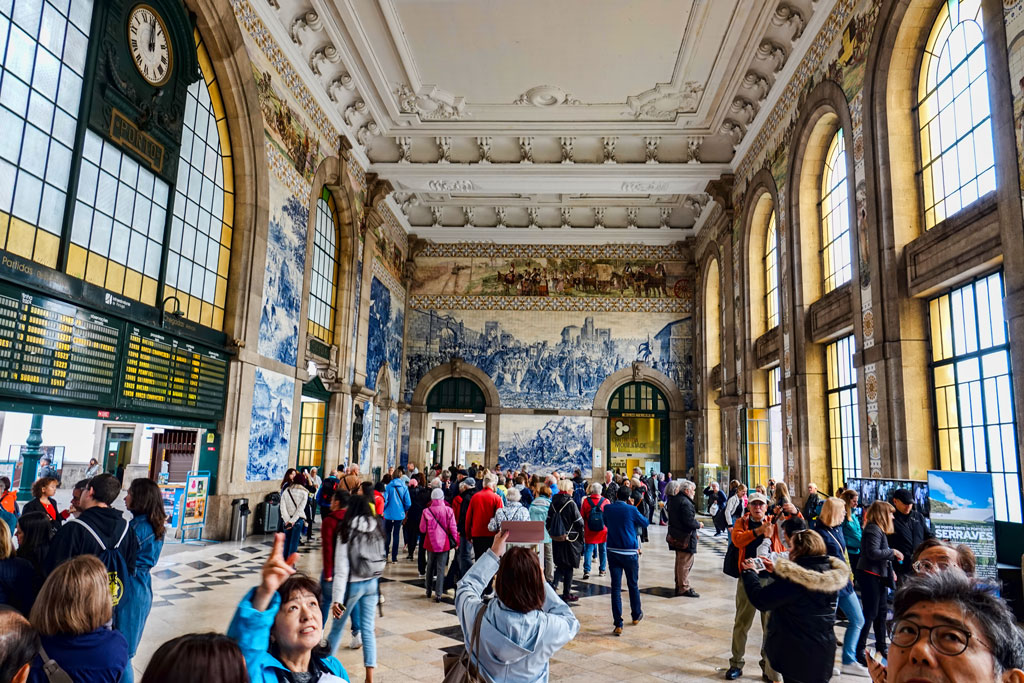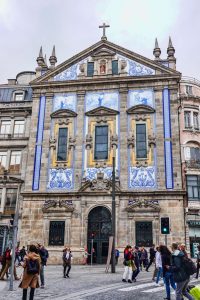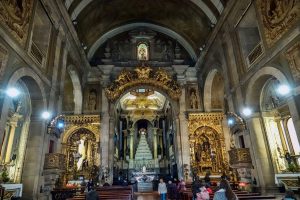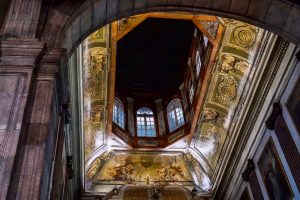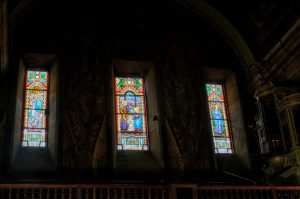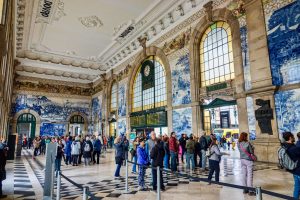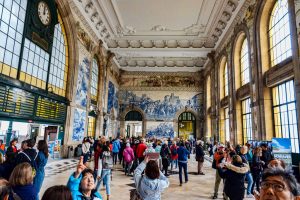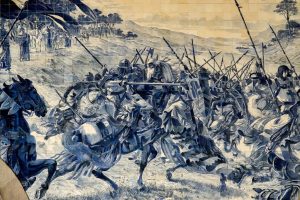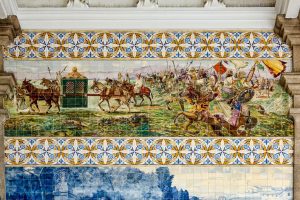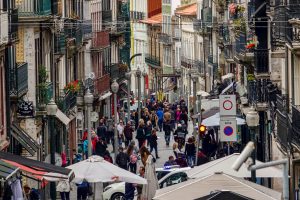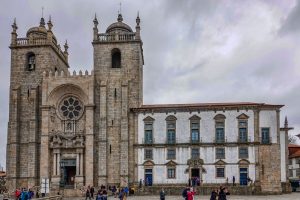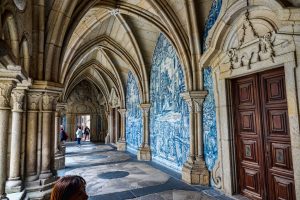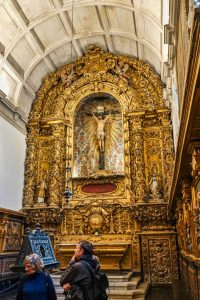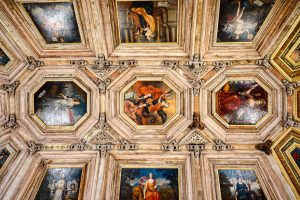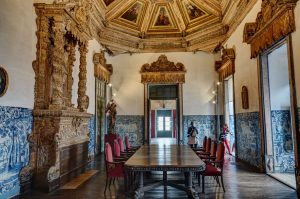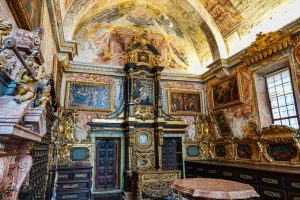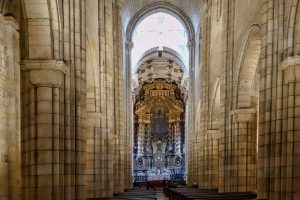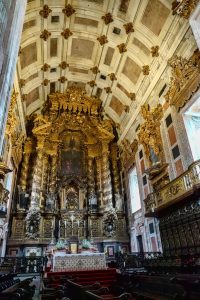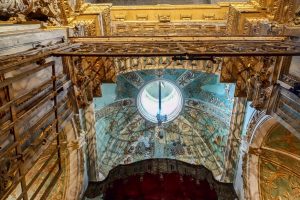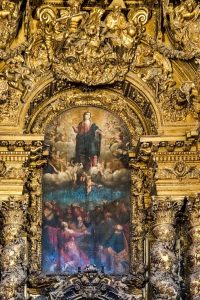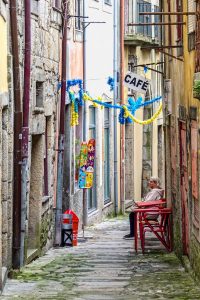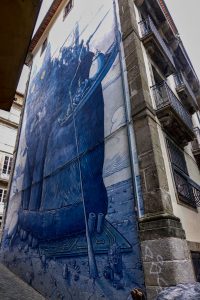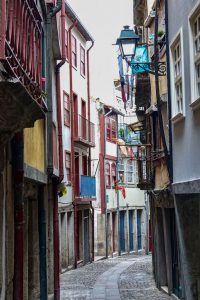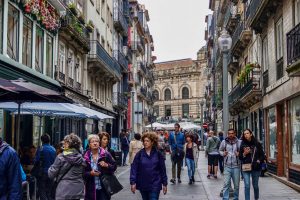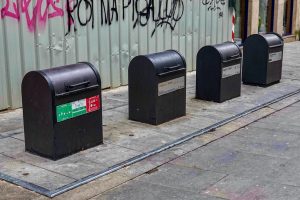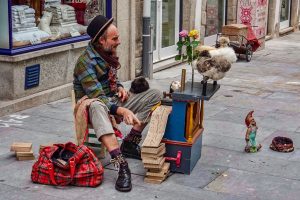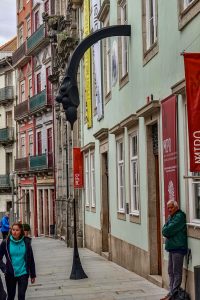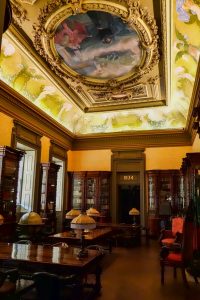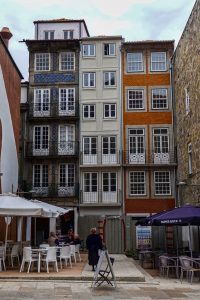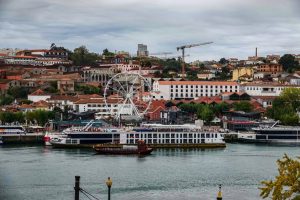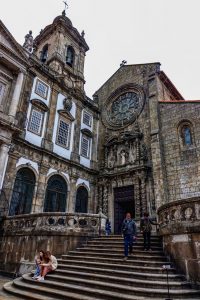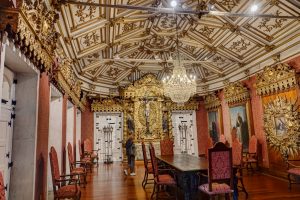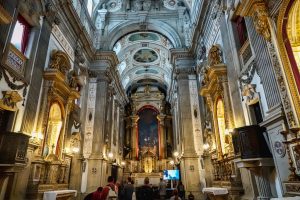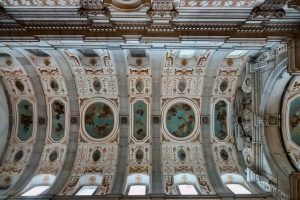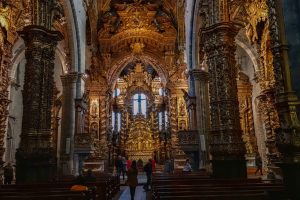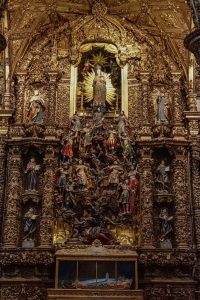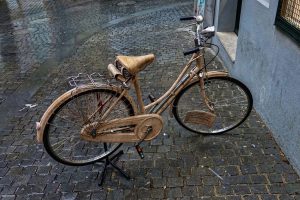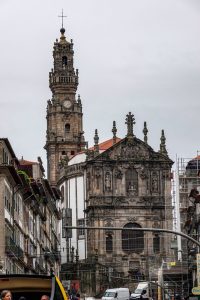TODAY’S TOURING
- Church of Santo António dos Congregados
- São Bento (Train Station)
- Sé do Porto )Porto Cathedral) & Tourist Info
- Rua das Flores
- Palácio da Bolsa (Stock exchange palace) – we only viewed the outside of the building and took a peek at the interior courtyard
- Igreja de Sao Francisco (San Francisco Church)
Then the rain downpour began and we wondered back street towards condo
- Stopped in a side street cork shop (Cork Solutions) and bought a few things
- Picked up some pastries at a bakery shop near the apartment
- Dried out, warmed up, and enjoyed our espresso and pastries
We ate dinner at Rei Dos Queijos. The restaurant was warm :), the local food good :), and the wine both inexpensive and good :). It was a good way to end the day, even the downpour rain both to the restaurant and the return.
Church of Santo António dos Congregados (Travelwiki)
The Church of Santo António dos Congregados is located just outside the metro and train station of St. Bento. It dates to the late seventeenth century using an earlier chapel from 1662 that was to be the seat of the Confraria de Santo António de Lisboa. The Baroque façade features a niche with a statue of St. Anthony. The exterior tiles and the interior wall paintings depict scenes from St. Anthony’s life and attest to the devotion to the patron saint of Lisbon. It is accessible to people with reduced mobility.
▲Porto Cathedral (Sé do Porto)
This hulking, fortress-like, 12th-century Romanesque cathedral, while graced with fine granite stonework typical of northern Portugal and lavish 18th century Baroque altars, feels gloomy and stark inside. But its history is palpable. Henry the Navigator was baptized here, and it was the scene of many royal weddings (including that of Henry’s parents, João I and Philippa).
Rua das Flores (Rick Steves)
This traffic-free street is lined with iron railings, vivid azulejos, outdoor café tables, and enticing shops selling jewelry, antiques, chocolates, and other temptations. A decade ago, this was a deserted no-man’s-land; today, it’s a touristy main drag—and a great example of how Porto is blossoming all over again. And yet, some funky graffiti (a Porto specialty) and ragtag house fronts still survive, as a reminder that Porto is the result of a complex and authentic history. Enjoy this strip for a few blocks downhill.
▲▲Stock Exchange Palace (Palácio da Bolsa) (Rick Steves)
This unassuming building is neither a stock exchange nor a palace, but a breathtaking monument to civic and commercial pride, with some of the most lavishly decorated rooms in Portugal. Built over 70 years by the Commercial Association of Porto, the building celebrates Porto’s renowned work ethic and dedication to international trade. For more on the history of the building.
Igreja de São Francisco (Lonely Planet)
Sitting on Praça Infante Dom Henrique, Igreja de São Francisco looks from the outside to be an austerely Gothic church, but inside it hides one of Portugal’s most dazzling displays of baroque finery. Hardly a centimetre escapes unsmothered, as otherworldly cherubs and sober monks are drowned by nearly 100kg of gold leaf. If you see only one church in Porto, make it this one.
High on your list should be the nave, interwoven with vines and curlicues, dripping with cherubs and shot through with gold leaf. Peel back the layers to find standouts such as the Manueline-style Chapel of St John the Baptist, the 13th-century statue of St Francis of Assisi and the 18th-century Tree of Jesse, a polychrome marvel of an altarpiece. The church museum harbours a fine, well-edited collection of sacred art.
In the eerily atmospheric catacombs, the great and the good of Porto were once buried. Look out for sculptural works by Italian master Nicolau Nasoni and prolific Portuguese sculptor António Teixeira Lopes.
